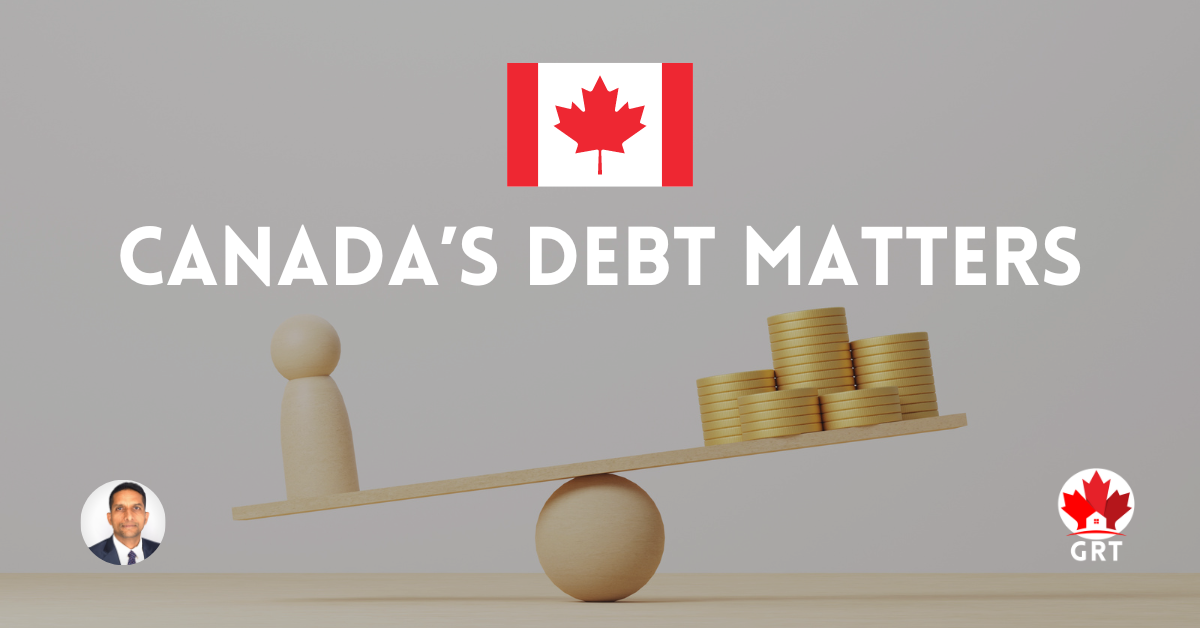As per the latest analysis on Global Debt published by visual capitalist, Canada now ranks as the 10th highest globally in government debt outstanding. The Debt to GDP ratio is now at 106.4%. Following are some of the prominent reasons that are contributing to this high debt.
Covid-19 Pandemic
One of the primary reasons is the COVID-19 pandemic, which has led to a significant increase in government spending on healthcare, social welfare, and economic stimulus packages. The pandemic has also resulted in a decline in tax revenues, which has further contributed to the increase in government debt.
Aging Population
One significant reason for Canada's high debt is its aging population. The increase in healthcare and pension costs due to the growing number of elderly citizens has put a strain on the country's finances. Addressing this issue requires careful planning and effective strategies to manage the costs associated with an aging population.

Non-essential Spending
There are other concerning facts related to the spending patterns of the current government. It is clear that there has been unnecessary spending in certain areas, which could have been controlled. One classic example is the ArriveCan app, which cost over $54 million of public money. There are many more instances wherein external global expenses were prioritized over domestic necessities.
Infrastructure & Immigration
Furthermore, the country's infrastructure needs have also contributed to the increase in government debt. On the other hand, increased levels of immigration have placed enormous pressure on essential services, such as healthcare. In my opinion, the government has primarily focused on bringing in more people without adequately considering whether the regions across the country are prepared for an influx of individuals.
What can be done?
To fix this problem, the government can take several actions:
- Bring in structural reforms to improve efficiency in public services. Reduce government spending by cutting non-essential programs and services.
- Boost economic growth by investing in job-creating infrastructure projects and enhancing business environment.
- Central bank of Canada needs to take measures to control inflation and bring in overall economic stability.
In conclusion, Canada’s high government debt is a complex issue that requires a multi-pronged approach to rectify. By implementing corrective measures, the government can ensure that the country's debt remains sustainable and does not become a burden for future generations.
Reference:
- Visualizing Global Debt: https://www.visualcapitalist.com/97-trillion-of-global-debt-in-2023/
- Canadians bear weight of growing government debt burden: https://www.fraserinstitute.org/article/canadians-bear-weight-of-growing-government-debt-burden

